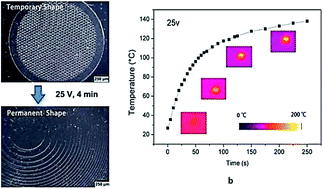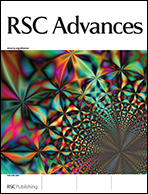Electro-activated surface micropattern tuning for microinjection molded electrically conductive shape memory polyurethane composites†
Abstract
Shape memory polymers with surface micropatterns have seen rising demand for high value applications such as adjustable adherence surfaces, dynamic micro-geometries for cell culture studies and switchable information carriers. Recently, microinjection molding has emerged as an efficient way to manufacture devices which contain surface micro-features using a wide range of polymers with high accuracy. In this study, shape memory polyurethane–carbon nanotube composites were prepared by twin-screw melt extrusion and subsequently processed using microinjection molding to obtain components with surface micropatterns. Then an electro-activated surface micropattern tuning system was developed which could recover the original micropatterned surface of the components after a thermal deformation by applying a current which heats the component using resistive heating. In order to optimize the technique, three key areas were investigated in this work: conductivity of the microinjection molded microparts, the retention of shape memory micropatterns on the surface of microparts during annealing treatment, and the macroscopic area shrinkage of microparts after thermal treatment. It has been found that the electrical conductivity of microinjection molded parts is relatively low due to the high shear rates prevalent in the process. An annealing treatment improves the electrical conductivity by several orders of magnitude, but can be detrimental to the dimensional stability of the micropatterns, which depends significantly on the micro-injection molding parameters, especially the mold temperature. Increasing the mold temperature, melt temperature, injection speed and injection pressure result in better retention of the micropattern and improved dimension stability during annealing treatment. This work demonstrates the potential of electro-activated surface micropattern control for microinjection molded electrically conductive shape memory polymer composites, which could be a promising technology for a range of application areas including electro-adjustable adherence, information storage, and anti-counterfeiting technology.


 Please wait while we load your content...
Please wait while we load your content...